Today’s article comes from R.D. Sussman who has previously written fantastic pieces about the modern rise of Delta and the new American Airlines. He has been involved with the airline industry for over 20 years and is an active travel consultant and airline analyst. R.D. is also a huge #Avgeek and theme park enthusiast.
This is the second part of this series. You can find the first part here.
The 1990s: The rise of Southwest, and the response of the majors.
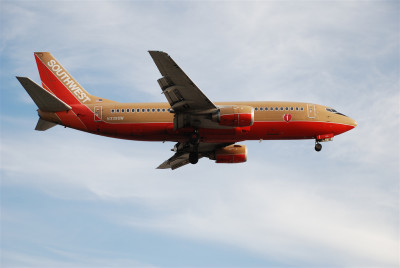
As PEOPLExpress collapsed, Southwest was continuing their growth at a steady & controlled pace. Growth through the late 80s was boosted by the death of Pan American, Eastern & Midway, Southwest entered the east coast in 1993 via Baltimore/Washington (BWI). Their arrival began to alarm competitors, including USAir, United, Continental & Delta.
USAir’s response was slow & poorly planned out. Their first attempt was to start up flights with a flexible cabin, offering higher density seating while allowing a business class product. This failed quickly, and became the roots of MetroJet, a competitive ‘airline within an airline’ to operate in markets opposite Southwest in the Northeast to Florida market. MetroJet’s profits were elusive; moving the operations base to Washington/Dulles (IAD) improved some fortunes – but woke up United to respond as well. In the end, MetroJet was broken down & shut down in 2002.
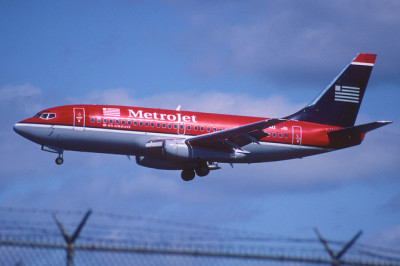
United’s response was more adept, but heavily restricted by pilot unions: SHUTTLE by United took most of the west coast flying done by United and turned it into a Southwest style operation: Frequent flights, less space, no frills. However, being able to only operate up to 41 planes meant they could not maintain the same frequency that Southwest had, and in the end SHUTTLE was merged back into United at the end of the 1990s.
Delta’s response was more aimed at protecting their long-held Florida routes. Delta Express took 737s from the mainline carrier in an all-coach configuration, and flew them throughout the Northeast & midwest to Orlando, Tampa & Ft. Lauderdale to reduce costs & add frequency. These flights were far more successful than the others, as they were also eligible for frequent flyer points and other amenities the other LCCs did not have in them. However, the downturn following 2001 shuttered Delta Express, and formed the base for their SONG offshoot.
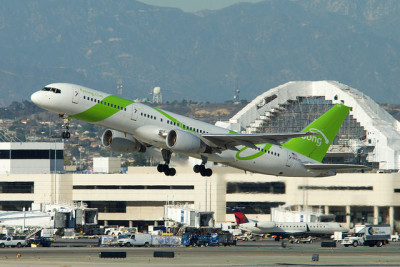
Continental’s ‘airline within an airline’ was by far the worst disaster of the four others. Following a second bankruptcy exit in 1993, they began to look at how to compete against Southwest, and formed a new carrier based upon low costs & frequent service. This new entrant was known as Continental Lite, and flew point-to-point markets from Texas to the Northeast, and all points within. Initially successful, these flights were all marketed as Continental – with no differentiation between a Lite flight, and a mainline flight.
Regular business passengers (the bread and butter of an airline) noticed, and loyalty – plus loads- began to evaporate. Fare pricing was absurdly low and combined with a ‘Add a penny, add a pal’ twofer fares, Lite hemorrhaged money out every door. Late flights and irrational city pairs (Greenvile, SC to Greensboro NC five times a day?) meant that it cost more to put the plane in the air than it would ever make in money. Gordon Bethune took Continental’s helm in 1994, saw the Lite failure, and quickly grounded it – but not before it had swallowed an immense $1.2 BILLION in cash during its two year lifespan.
The Birth of More LCCs
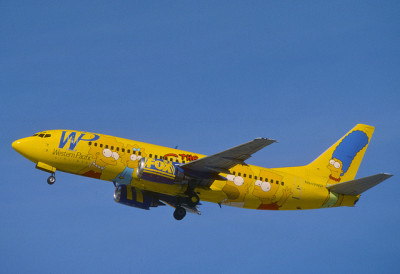
The 1990’s also brought forth another wave of LCCs – ValuJet, AirTran, Western Pacific, National & others entered the skies, some with success, some with failure. Western Pacific’s logojet program allowed sponsors to buy space on the side of their fleet of 737s, which helped offset the acquisition costs of the plane itself. Overexpansion & attempting to move to Denver International doomed WestPac to the history books.
ValuJet was one of the most successful upstarts in the history of airlines. Buying ex-Delta DC-9s for cheap and providing a true LCC product from an Atlanta hub, profits & growth were staggering. Two accidents within a year of each other shut ValuJet down for review, and while neither was the fault of the carrier, the damage was done. Taking over Orlando based AirTran and renaming the carrier allowed it to live on as AirTran, and over the next 15 years they grew to become one of the best-known LCC carriers. In the end, AirTran was bought by Southwest, giving Southwest the final foothold they needed in the USA.
Rebirth of Low Cost Carriers
The downturn following the events of 2001 led to a great deal of shakedown in the industry. Airlines once considered too big to fail one by one entered bankruptcy, in some cases twice over. As each carrier tried to survive a market that was 1/2 as big as the year previous, many attempts were made to stem the tide of red ink, and empty jets.
United & Delta both revived the failed ‘airline within an airline’ concept, aimed at leisure routes from their hub airports. SONG by Delta took dormant 757s in an all-coach configuration and put them on longer routes from Atlanta, New York & Los Angeles. Features such as TV, buy-on-board snacks & a lighter attitude towards flying brought success – and in the end Delta took the lessons from SONG and put them on their mainline planes. United decided to do something similar with Airbus 320 jets, naming it TED. A similar product operating from their hubs did not produce anything good – and TED ultimately earned the joke of “It’s UniTED – but without YOU and I on board.”
Southwest on the other hand continued to grow at a steady & controlled pace. The addition of 737-700NG aircraft with transcontinental range allowed them to fly coast to coast, and their range and scope grew at the same pace. Entering cities like Boston, New York/LaGuardia & Washington/National moved their product into nearly every major airport in the country. Southwest was no longer relegated to the second-tier airports, and had finally earned their status as a major, national airline.
You did pay for air, right?
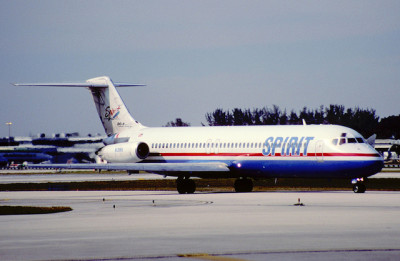
Spirit Airlines actually started as a full-service charter airline, based in Atlantic City. Offering service to markets unserved by major carriers, they grew out of their shell into a national carrier using MD-80s to fly from major cities to smaller ones. New ownership quickly changed this though: The fleet was swapped out for new Airbus 320 series planes, and the transformation began. The ascension of William Franke and Ben Baldanza to the top of the carrier started a transformation into what they are today: The Ultra Low Cost Carrier.
Taking a page from PEOPLExpress, Spirit began a metamorphisis into the USA’s most recent ULCC. Seat pitch disappeared, anything and everything was available at a cost, and fares plummeted to rock bottom. Spirit quickly moved into many markets from larger cities, skimming off the never traveled and the leisure passenger as their target market. Their growth has been sensational, and like any ULCC, if the carrier can’t make money, they don’t stick around. Keeping planes in the air is another cornerstone: At Spirit, you’d better be ready when THEY are. With the highest utilization rate in the country, Spirit’s planes don’t spend a lot of time on the ground. Red-Eyes & odd timed flights make up a huge part of their scheduling process, allowing more segments to be flown- and thus more passengers to be carried. Aircraft are flown with as many seats as legally possible, allowing more seats (And more ancillary revenue) to be sold. Frequency is usually not more than once a day on any given route, though this too is changing in some markets.
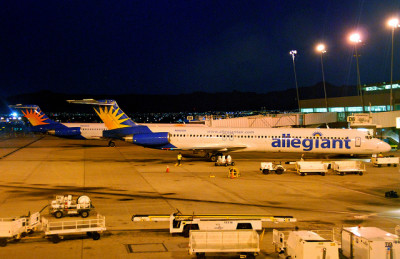
Noting this success was Allegiant Air – with similar roots to being a charter and early scheduled carrier in the 1990s. A change in ownership & management in the early 2000’s allowed them to change their structure, and their practice. Buying aircraft surplus at low costs, and flying from third tier cities meant they could charge lower fares; frequencies rarely are more than 3x a week, and using aircraft at a much lower utility reduced maintenance costs accordingly. Growth has been explosive there, with bases in major cities allowing them to use planes when it is advantageous to do so. Allegiant’s third-tier approach has made them successful, allowing them to expand from major markets rapidly; Phoenix/Gateway & Las Vegas being their largest single non-hubs in the system.
And, as of late, Frontier Airlines has gone from being a LCC to a ULCC itself, eliminating the Denver hub in favor of a point-to-point base model. This has been with great pain though, with cancellations, frequency issues & late flights being the norm not the exception. In 2014, a group of investors bought out the airline, and began the ultimate rebuilding of the airline into a national network ULCC. Many frills associated with the old Frontier are gone: In flight TV, snacks & free drinks are now obsolete, with seats being added to planes as quickly as possible in this transformation to a new style carrier. The dismantling of the Denver hub is in progress, with less than 75 daily flights today and expected to be removed completely from being a hub by the end of 2015. In this change has come the elusive profits they have been looking for over the past 10 years; whether it is long-term successful is still in question. Merger rumors are constant over Frontier, with Spirit being the most likely (and logical)candidate at this point.
The Future:
In 2004, I predicted the airline industry would fracture into three service levels: Mainline/full service, LCC & ULCC. This has, for the most part, happened. As airlines continue to shift & change, there is room for growth in some places, but not in all. We are heavily constrained by the airports & airspace here in the USA, an obstacle that is a roadblock to further airline growth. However, it is the ULCC that is finding ways around this – particularly through second & third tier airports.
The future LCC will have more in common with today’s mainline carriers than with the traditional LCC roots: Virgin America has already done this, with a true First Class cabin, in flight connectivity and TV, and a stylish, upscale feel to it. JetBlue in a lot of ways is emulating this, adding their new MINT product to transcon flights, and expanding their services into more major markets. Southwest itself continues to evolve, adding routes to international destinations, as well as TV & Internet via personal devices.
Meanwhile, the ULCC will continue to evolve as well. Transcon flying is the last big leap that these carriers will do, where the costs are lower, the fares higher & the market is huge. Up to now, many ULCCs have kept these routes to mid-market transcon flying, and have not hit the traditionally larger coast-to-coast flying. Frequency flying will also increase for these carriers, especially in larger city market pairs. Newer & more evolved forms of ancillary revenue streams will be developed – most likely in the form of Buy On Board product, amenities and other areas of extra value to passengers. Evolution will continue at a very fast pace, with new products being tried, tested & used to expand the envelope in which these carriers operate.
And there will be failures: If any lesson is clear, our airline industry is not a certain one. We will see LCC & ULCC carriers cease operations and shut down; we will see them bought out and merged. If there is anything that is certain, it is this.
And then some idea man with some spare money will go after those dormant planes in the desert…



Until the mid-1980’s, Ozark Airlines operated a hub out of St. Louis Lambert Airport. Ozark served over 50 cities and was reasonable for those years. After the merger with TWA, Carl Icahn became the owner and in time TWA fell into a series of bankruptcies. Afterward, many of the gates at Lambert were taken over by Southwest Airlines. For a period of time, SWA kept some gates idle.
Forgot PSA the original low cost carrier that SW was molded after